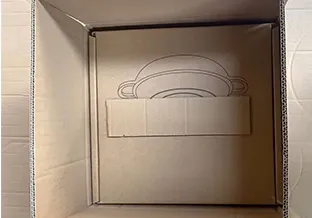
cleaning cast iron skillet with salt
The Art of Cleaning a Cast Iron Skillet with Salt
Cast iron skillets are beloved kitchen tools, cherished for their ability to retain heat, their durability, and the unique flavor they can impart to food. However, maintaining a cast iron skillet can be a bit intimidating for novice cooks. One of the most effective and natural methods for cleaning these culinary treasures involves using salt. This article will guide you through the process of cleaning a cast iron skillet with salt, highlighting the benefits and offering tips for proper care.
Why Clean with Salt?
Salt is not just a seasoning; it's a powerful cleaning agent. When used on a cast iron skillet, it acts as an abrasive, helping to lift food residues without damaging the surface. Unlike harsh chemical cleaners, salt is safe, non-toxic, and readily available in most kitchens. Using salt allows you to clean your skillet efficiently while preserving its seasoning—a layer of polymerized oil that gives cast iron its non-stick properties.
Steps to Clean Your Cast Iron Skillet with Salt
1. Gather Your Supplies Before getting started, ensure you have the following items on hand - Coarse salt (kosher salt or sea salt works best) - A non-abrasive sponge or dishcloth - A bowl of warm water (optional but recommended) - A paper towel or cloth for drying
2. Allow the Skillet to Cool If the skillet is still warm from cooking, let it cool down before cleaning. A hot skillet can be dangerous to handle, and it can warp if exposed to cold water.
3. Remove Loose Food Residues Before applying salt, use a spatula or wooden spoon to scrape off any large bits of food stuck to the surface of the skillet.
4. Add Salt Once the large residues are removed, pour a generous amount of coarse salt onto the skillet's surface. The salt will form a gritty paste that can help scrub away the stuck-on food.
cleaning cast iron skillet with salt

5. Scrub with a Sponge Using a non-abrasive sponge or dishcloth, scrub the skillet in a circular motion. The friction created by the salt will help lift the food particles without scratching the cast iron surface. If you find that the skillet is particularly dirty, you can add a little water to create a slurry that makes scrubbing easier.
6. Rinse and Dry After you’ve scrubbed away all the residues, rinse the skillet under warm water. Make sure to remove all the salt. Then, dry the skillet completely with a paper towel or cloth. It’s essential to dry the skillet thoroughly to prevent rusting.
7. Re-season the Skillet (if needed) If you notice that the surface has become dull or if you’ve stripped off some of the seasoning during cleaning, apply a thin layer of vegetable oil or flaxseed oil to the skillet while it's still warm. Wipe off any excess oil, then place it upside down in the preheated oven for about an hour to allow the oil to polymerize, restoring its non-stick surface.
Tips for Maintaining Your Cast Iron Skillet
- Avoid Soap Regularly using dish soap can strip away the seasoning, so stick to salt and water for most cleanings.
- Clean Immediately Clean your skillet shortly after use to prevent food from hardening and sticking.
- Store It Properly To avoid moisture buildup, store your skillet in a dry place. Some people place a paper towel inside to absorb any moisture.
- Regular Seasoning Regularly re-season your skillet to keep it in optimal condition. A well-seasoned skillet improves its non-stick surface, enhancing your cooking experience.
By following these steps and incorporating salt into your cleaning routine, you can ensure that your cast iron skillet remains a reliable companion in your culinary adventures. With proper care, this timeless kitchen tool can last for generations, offering exceptional performance and flavor to your meals.
-
Season Cast Iron Perfectly with GPT-4 Turbo TipsNewsAug.01,2025
-
High Quality Cast Iron Cookware - Baixiang County Zhongda MachineryNewsAug.01,2025
-
Premium Cast Iron Pan: Durable & Perfect HeatNewsAug.01,2025
-
High Quality Kitchen Durable Black Round Cast Iron Cookware Pancake Crepe Pan-Baixiang County Zhongda Machinery Manufacturing Co., Ltd.NewsAug.01,2025
-
Cast Iron Cookware - Baixiang County Zhongda Machinery | Nonstick, Heat ResistanceNewsAug.01,2025
-
High Quality Kitchen Durable Black Round Cast Iron Cookware - Baixiang County Zhongda Machinery | Non-Stick, Heat Retention, DurableNewsJul.31,2025


